The term Hybrid is something of a bad word in India. Long abused by the incessant use of low-spec components and ineffective systems, all of which failed to deliver anything like the fuel economy expected of a hybrid, the term ‘hybrid’ today holds little or no water in India.
This, however, is the real deal, the real McCoy. Say hello to the Honda City Hybrid, a car that’s so well stocked with cutting edge systems, it has technology falling out of its ears. Consisting of a full-on hybrid system that uses two large electric ‘motors’ and a voluminous battery pack in the trunk, it is a car that is between 35 or 40 percent more efficient than a regular petrol car. The City Hybrid, in fact, is so efficient, it has the potential to match even the most efficient of compact hatchbacks. There’s even more tech; the City Hybrid also comes with Honda’s driver assistance systems (ADAS) known as Honda Sensing, and this will be on the car we get in India too.
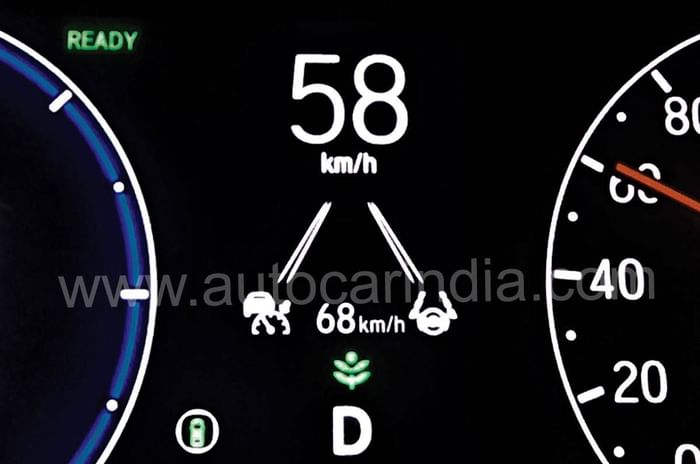
Rig Rundown
So, how does this Hybrid version of the City differ from the regular one we’re so used to seeing back home? For one, this car here is available in the sportier RS trim. This means you get sportier bumpers, there’s a new lip spoiler at the rear, and on the inside, you get upgrades like a sportier leather-covered steering wheel, multi textured seats (done in ‘leather’ and ‘suede’) and neat red contrast stitching. While this is the Sport Hybrid or the iMMD system, the RS trim isn’t exactly a match for this car, which honestly is more about efficiency and less about performance. So Honda in India could make do with just a different grille and a more prominent e:HEV badge. So much for cosmetics.
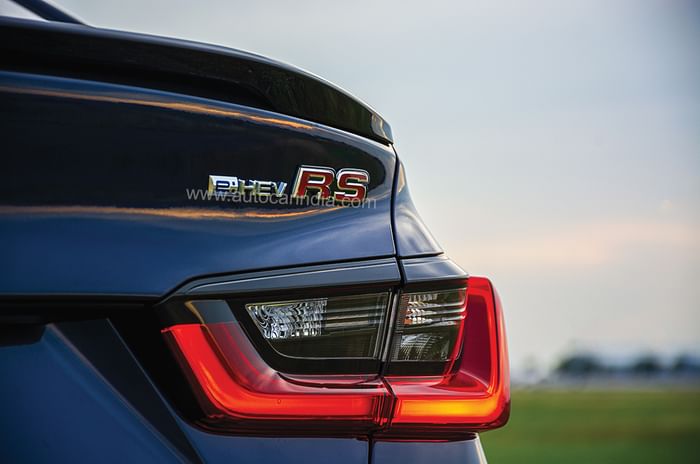
It’s under the skin where the Hybrid differs hugely from the City as we know it. The powertrain is completely different. Consisting of a 1.5-litre petrol that puts out just 98hp and runs a more efficient ‘Atkinson cycle,’ the engine is also aided by an electric motor that puts out a really strong 109hp. This clearly is no mild hybrid. The maximum combined power of the engine and the e-motor aren’t disclosed, but Honda does specify a maximum combined torque at 253Nm; the engine making 127Nm and the electric motor 253Nm.

Also very interesting is the fact that there is no gearbox. It has no CVT, no planetary gearset and no set of gear wheel sets either; it just has a single direct gear for high speed driving. So how does the engine send or transmit power to the wheels? Well, for the most part it doesn’t. Power goes to the wheels via the electric motor. In fact, the engine is often going at one speed and the wheels another. Motive force, as on a range extender, comes via the battery in the rear. So often, the engine is only run to charge the battery. Like all hybrids and EVs, the City also saves energy while decelerating, winding back otherwise wasted energy to the battery via an electric generator.

All told, the Honda City Hybrid is also around 110kg heavier than the regular City. To accommodate the largish battery in the boot, there’s no spare tyre on this car here, just a puncture repair kit. The car in India will come with a space saver spare, which will further reduce the already reduced boot capacity of the City Hybrid. While the regular City has 506 litres of space in the trunk, this Hybrid has 410 litres.
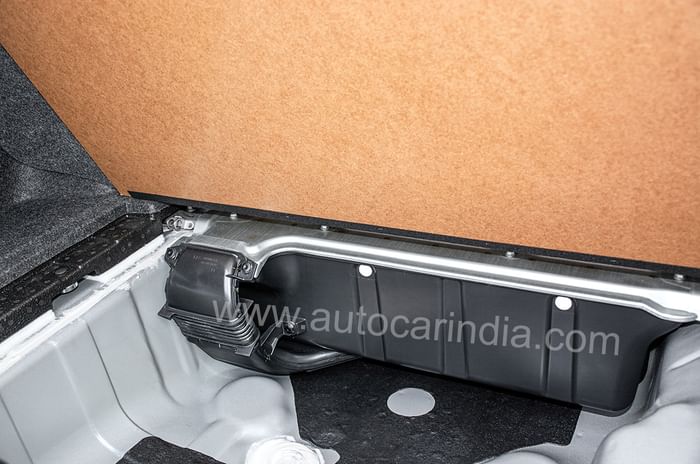
The only other big mechanical change on the car includes the addition of a rear disc brake; this is because the City Hybrid has 160 percent more torque when compared to the petrol. And the hybrid also gets an electric parking brake. Also, since there is a battery in the boot, there’s also a ‘vent’ placed between the right rear door and the backrest.
Dual Power Drive
So, what’s it like to drive? A bit strange initially, as the experience is both very familiar and quite different, all at the same time. It’s familiar, of course, because this is a City. So getting in, settling down behind the wheel and steering this car around feels familiar. But it’s also very different. The engine doesn’t start when you hit the starter button, and then as we take off, the car moves off silently on battery power alone. To denote you are driving in EV mode, a small green logo illuminates on the instrument panel. And here it’s silent, smooth, and easy to drive in stop-start traffic.
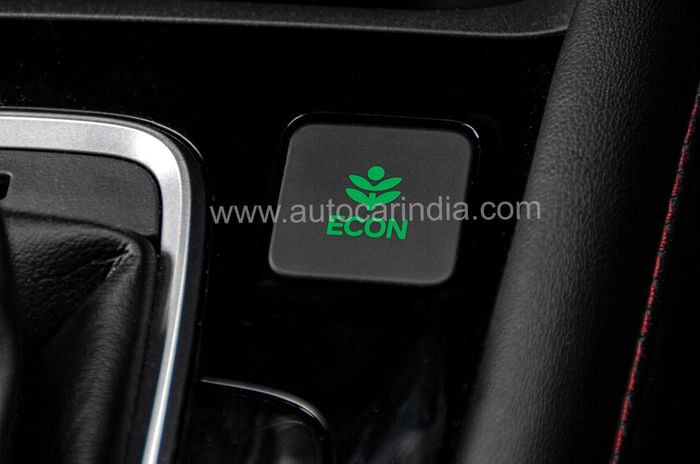
While there’s no dedicated EV mode you can select manually, you can keep the City Hybrid running as an EV if you use small throttle openings and take the aid of the Econ button... of course, it dulls responses down a bit. The City Hybrid, in fact, will run in EV mode all the way to 60kph if you are gentle on the throttle. Press down harder or deplete the small capacity battery and the 1.5 engine will kick in. It does this to give the electric motor a mechanical ‘push’, or to top up the batteries.
The manner in which the City Hybrid responds, however, feels distinctly CVT like; probably why Honda says it has an E-CVT, even though it clearly doesn’t have one. As you pull forward, there’s a fair amount of slur, engine speed and road speed seldom progress in full sync, and what also feels odd is that you have absolutely no idea what speed the engine is spinning at; the latter particularly odd for a Honda.
Despite having loads of torque on hand, the City Hybrid also doesn’t feel quick initially. It doesn’t quite explode off the line like a regular City, or even an EV, and the ramp up in performance is quite linear. Acceleration firms up after a bit of a delay and then it accelerates in false steps... which again, like a CVT, makes you feel like it is running through the gears.
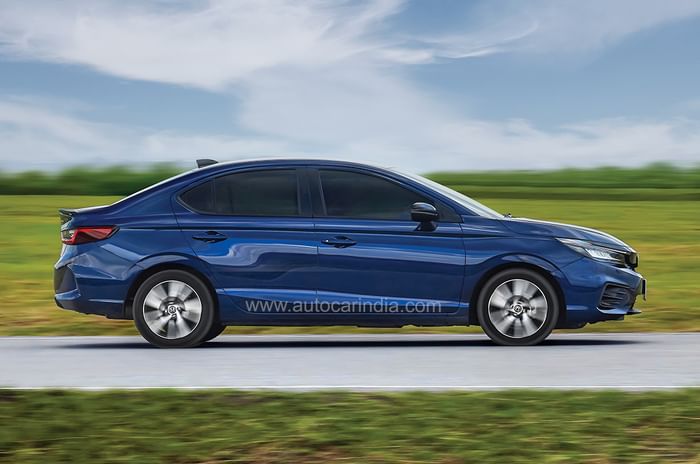
Get past the initial slack and the torque delivery becomes much stronger, the tug when you put your foot down now feeling much more robust. You can feel the acceleration when you hit the throttle, and then, when you want a big dollop of power, the car feels like it has loads and loads of grunt. Don’t expect a direct correlation between the throttle position, rpm and performance though, it just isn’t there.
Post 120kph, Honda actually allows the engine to power the front wheels. This is done by closing a clutch and using a single gear ratio. And once the car reaches these speeds, an electric boost is only delivered occasionally, the car switching between the combustion engine and pure EV mode again when you lift off the throttle. What’s super impressive is that most of this switching between various sources of power happens almost seamlessly, and you are only aware of the changes due to the moving pictogram in the instrument panel.
While Honda claims a sub-10 second time from 0-100kph for the City Hybrid, the car doesn’t feel quite as quick off the line. It does accelerate increasingly harder at higher speeds, however, with a typical Honda-like snarl from under the hood, so it will be fascinating to see just how quick it is.
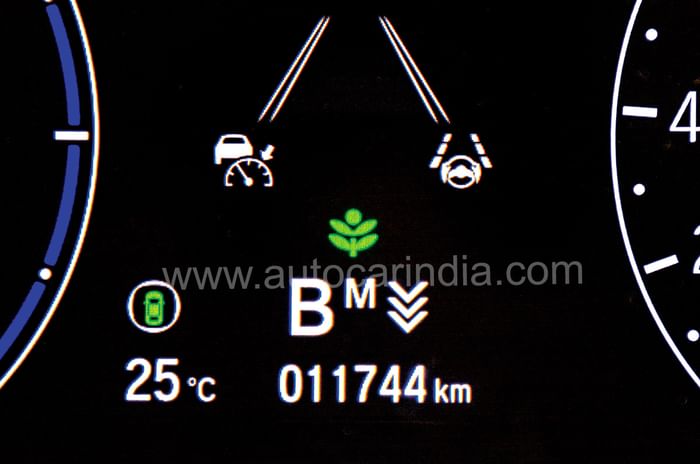
As with many hybrids, the Honda also comes with a ‘B’ mode on the gear lever. Select this and you can adjust regeneration levels via the paddles behind the steering wheel, and then driving for the most part in ‘one-pedal-mode’ is possible too.
It doesn’t quite come to a full stop smartly, but what you can do is combine this mode with the driver assistance systems. The automatic braking (ACC) works particularly well in moving traffic, lane-keeping assist can easily manage a few gentle corners (if the highway is well marked), and what’s nice is that I find it particularly easy and convenient to stick to a speed limit like 120kph on a fast and open highway, with the car doing most of the hard work. Have to pinch myself though, I can’t really believe this is a Honda City.
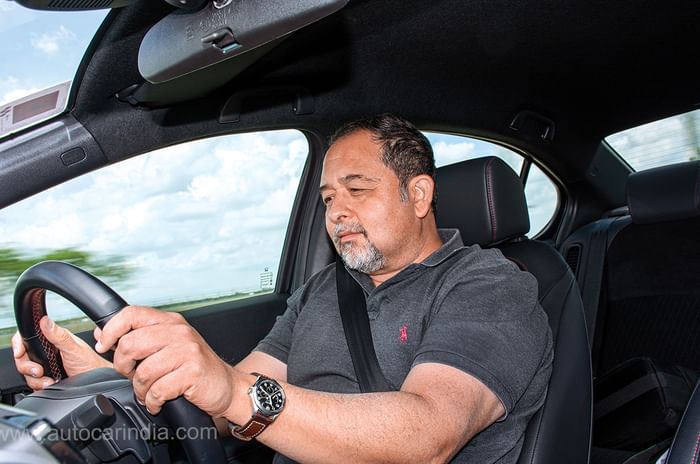
The City Hybrid, with its lower ground clearance in Thailand, also feels more agile. The difference isn’t huge, but I can’t help but notice it feels tidier and more compact as I go quicker and quicker around corners. The City Hybrid will be raised for India, and, all things being equal, it will also ride better than this car. Not that the Hybrid in Thailand is uncomfortable over bumps. Far from it, with the extra weight of the battery in the rear, the ride is flatter and bump absorption on the Yokohama Earth Blue tyres is very good.
Honda has even done a good job with the brakes; not always easy on a hybrid. There is a fair amount of feel and connect when you are braking gently, even though the car is only using regeneration to slow down, and then, as you get harder on the brakes and start using the discs more, the transition is seamless and very natural.
Kitna Deti Hai?
Since the City Hybrid is all about fuel efficiency, we couldn’t resist recording an indicative figure.

Yes, conditions clearly are different in Thailand. Traffic patterns aren’t similar, the E20 petrol isn’t the same and then, with the City Hybrid often being pulled hard during our evaluation and testing, conditions are far from ideal. Still recording a real tank top to tank top figure proved to be something of an eye opener; the City Hybrid returned 20.3kpl over approximately 95km, pretty unreal. Expect an ARAI figure in India of at least 25-26kpl, making it easily the most efficient car of its size. And don’t be surprised if it proves to be more efficient in the real world, than even some of the most efficient hatchbacks, especially in slow start-stop traffic, where it basically runs like an EV.
What To Expect
The City Hybrid will be the first well-specified ‘mass market’ hybrid to go on sale in India, making it something of a technological trendsetter, a car many will look up to. Capable of delivering a big jump in fuel economy, it is both a green car and a fuel-saving device par excellence. Also, with the price of petrol inching towards Rs 120 a litre in some cities, Honda couldn’t have asked for a better time to introduce the City Hybird here. The car is comfortable, the performance is good, the ride is pliant and it drives and handles in a neat and confident manner. The biggest plus, however, is the huge jump in fuel efficiency, something owners who habitually run long distances are sure to appreciate. Then the fact that it is part EV should lend it plenty of green credentials and then there are the added driver safety systems and aids.

It will be expensive at an expected price of around Rs 19 lakh, though it still lacks a good central touchscreen and is missing features like connected tech, wireless charging, wireless Apple CarPlay (and Android Auto) and cooled seats. Still, if a comfortable, clean, efficient and technologically advanced sedan is what you are looking for, and you have a fair amount of flexibility when it comes to your budget, Honda’s City Hybrid delivers a unique set of strengths. Only thing is you’ll have to keep answering the question, ‘Kitna deti hai?’
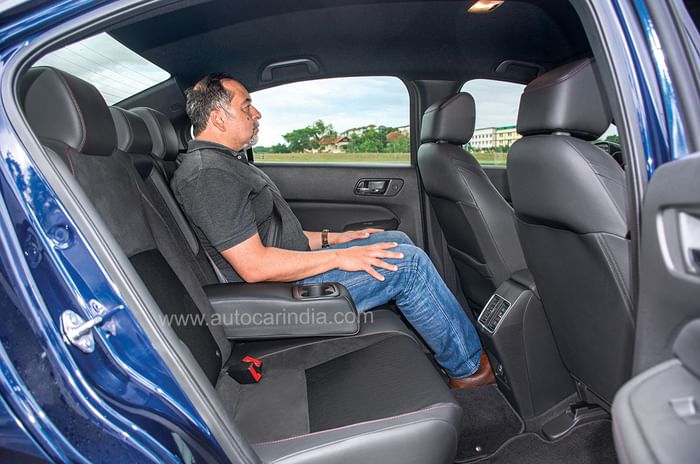
Why the city hybrid is so efficient
The City E:HEV combines two powerful electric motors with a 1.5-litre Atkinson Cycle 4-cylinder engine. One of the motors functions as a large pancake-type electric generator, while the other primarily does the work of the propulsion motor. The two are sandwiched together and attached to the end of the engine, where the gearbox normally sits. As the engine turns, it powers the generator that sends power to the battery at the rear. To increase levels of efficiency, Honda has ditched the transmission altogether, and even disconnects the engine from the wheels for the most part. A lock-up clutch is used when the engine has to provide direct drive at higher speeds.

What the car has also been programmed to do is keep the engine operating at its peak efficiency, somewhere around 2,000rpm. This is important because by the time the engine reaches 4,000rpm, it could be using twice as much fuel. Interestingly, 95 percent of the energy saved as electricity in a hybrid is re-deployed to the wheels. In contrast, even the more efficient petrol engines only manage 40 or 45 percent efficiency.


































